10 Easy-to-Grow Herbs
Wanting to start an herb garden but looking to start with easy-to-grow herbs first? This list will help!
If you’re new to gardening, an herb garden is a great place to start.
Fresh herbs at your disposal year-round is a true blessing, especially for those who love adding depth to their dishes.
(This post may contain affiliate links.)
When you grow your own organic herbs at home, you have control over the type of soil and fertilizer you use (so its great for avoiding harmful pesticides!).
You don’t need a ton of space and you don’t have to start from seed, either.
Starting from seed is great but it does require patience, planning, and a little know-how (this post on seed-starting will help).
Other alternatives include buying small potted plants from grocery stores and nurseries, just make sure it says “organic”.
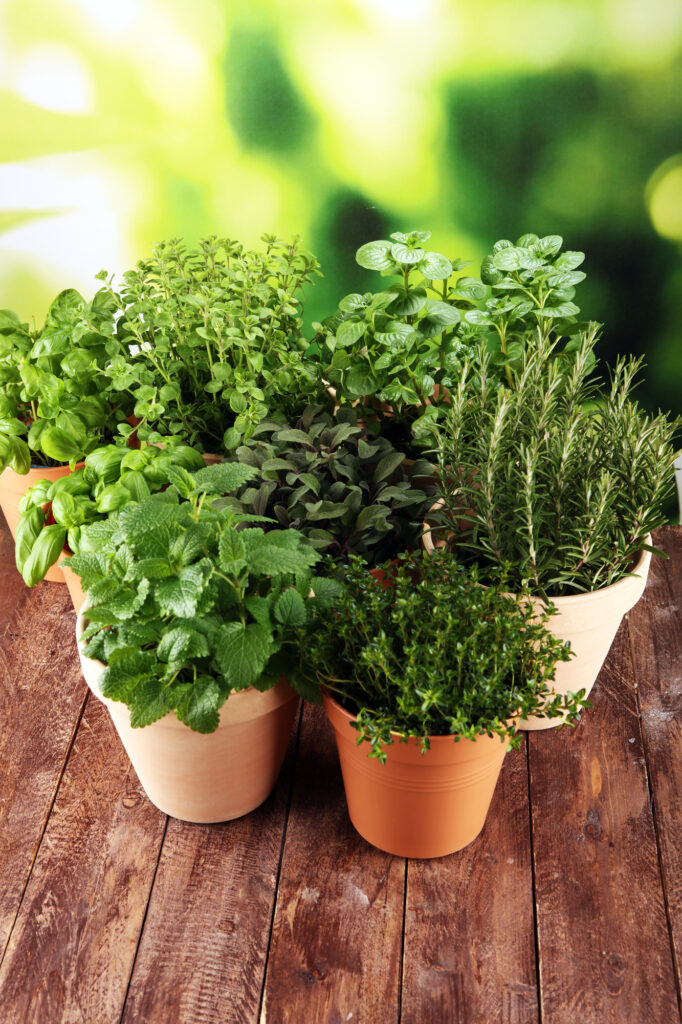
Below is a list of 10 easy-to-grow-herbs; not all of them will suit your tastebuds but some of them will.
Personally, my favorites are basil, cilantro, rosemary, and mint.
To grow a successful herb garden, you’ll need access to ample sunlight, water, good soil, and a few containers.
You don’t even need a yard! Many gardeners actually prefer growing their herbs in containers on their balcony, patio, or on a windowsill near their kitchen.
If you’re interested in growing herbs in water and forgoing soil altogether, you can do that too!
(Head to my post about how to grow herbs in water to see how.)
Now let’s jump right into this list!
Easy-to-Grow Herbs for a Culinary Herb Garden
1. Basil
Basil is one of the most beloved herbs around and it’s not hard to see why: it’s delicious and aromatic, plus great in a variety of dishes.
Basil plants need LOTS of sunlight and moist, well-draining soil.
Make sure to use a container that is at least 6-8 inches wide so that the root system has room to expand.
When you water the plant, it’s best to water the soil directly because wetting the leaves may encourage mildew growth.
Also, overhead watering might also snap the thin stems, something you want to avoid.
Basil performs best outdoors because of how much sunlight it needs, just be mindful of your basil plant during heatwaves. Shade cloth comes in handy during those times.
SUNLIGHT NEEDS: Full sun
WATER NEEDS: Moist and well-draining soil
2. Cilantro
Cilantro is the perfect addition to food like tacos and tostadas.
Like basil, it’s best to throw in cilantro at the very end of the cooking cycle.
Cilantro prefers a humid environment, and needs about 6 hours of sunlight a day, though it doesn’t like very high temperatures.
Grow cilantro from seed, as the herb doesn’t do well when transplanted.
Head to this post for an in-depth guide on how to grow cilantro in a pot!
SUNLIGHT NEEDS: Full sun but needs protection during heat waves
WATER NEEDS: Moist and well-draining soil
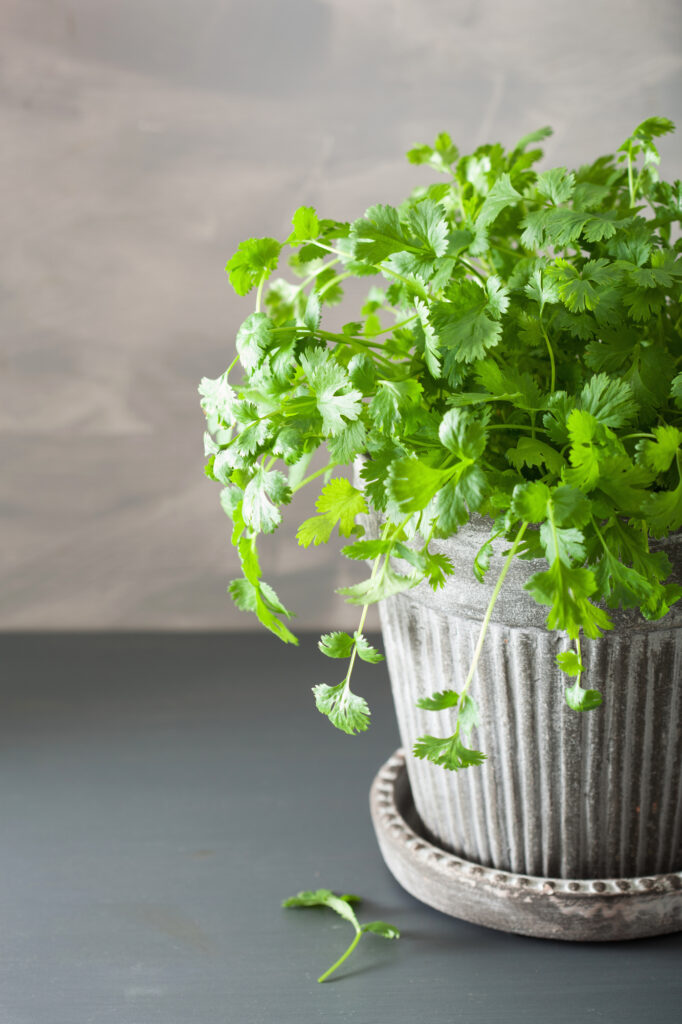
3. Chives
Chives are an excellent herb for beginner gardeners .
Chives need 6 hours of sunlight and do really well indoors and in containers near a windowsill.
Water frequently and make sure the soil is well-drained. Use a tiny bit of organic compost throughout the growing season.
You can expect the chives to grow to about 12 inches tall, and they can spread out about a foot wide.
SUNLIGHT NEEDS: Full sun
WATER NEEDS: Moist and well-draining soil
4. Mint
Mint is probably the most easy-to-grow herb on this list. There are several different types of mint, so have fun choosing! You’ll likely figure out your favorites as you try more and more.
Mint plants can spread out rather quickly and the herb is known for its invasiveness, so be mindful of where you plant it.
It’s best to keep mint in pots so you can keep it from spreading.
Purchase a small plant or herb cuttings as the plant transplants well.
This easy-to-grow herb prefers moist, well-drained soil.
SUNLIGHT NEEDS: Full sun
WATER NEEDS: Moist and well-draining soil
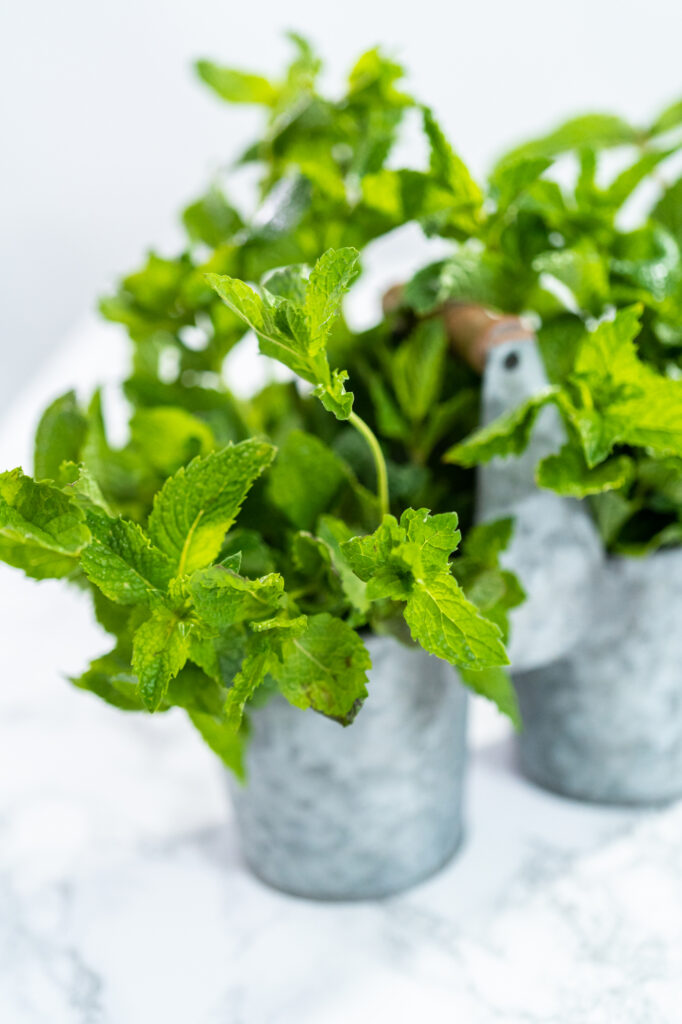
5. Oregano
Oregano is not only flavorful but medicinal, too. It thrives in a warm climate and will continue to grow year after year.
Water the plant when the soil is dry to the touch, and make sure the soil is well-drained.
It will grow to about 2 feet tall. If you’re planting oregano in a container, make sure the container is at least 12 inches wide.
SUNLIGHT NEEDS: Full sun
WATER NEEDS: Let the soil dry out between waterings
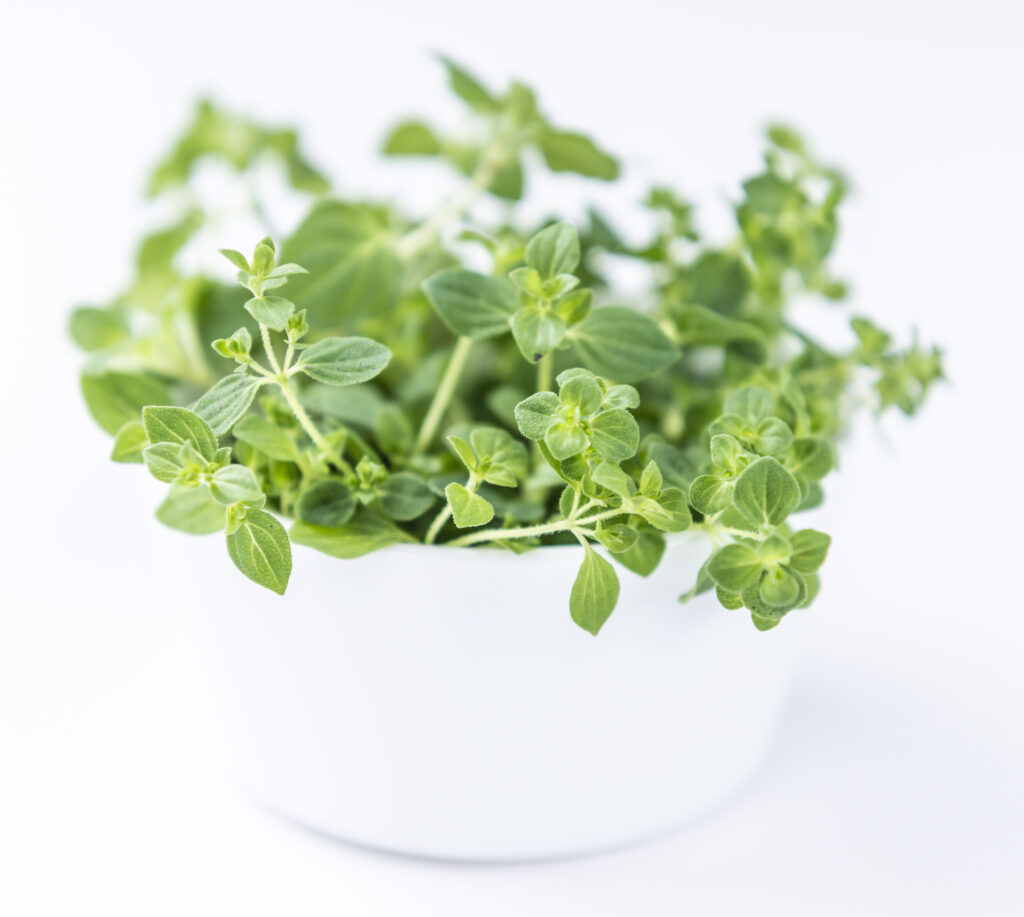
6. Parsley
Growing parsley from seeds is not the best option because the herb takes very long to grow from seed.
Instead, choose healthy seedlings and space them about 9 inches apart.
You can choose between flatleaf parsley or curly leaf parsley.
This easy-to-grow herb is pretty drought-resistant but they’ll thrive in moist soil and plenty of sunshine.
Don’t be afraid to grow parsley in a container – it’ll do very well!
SUNLIGHT NEEDS: Full sun
WATER NEEDS: Drought-tolerant but performs best when well-watered. Water when the topsoil feels dry.
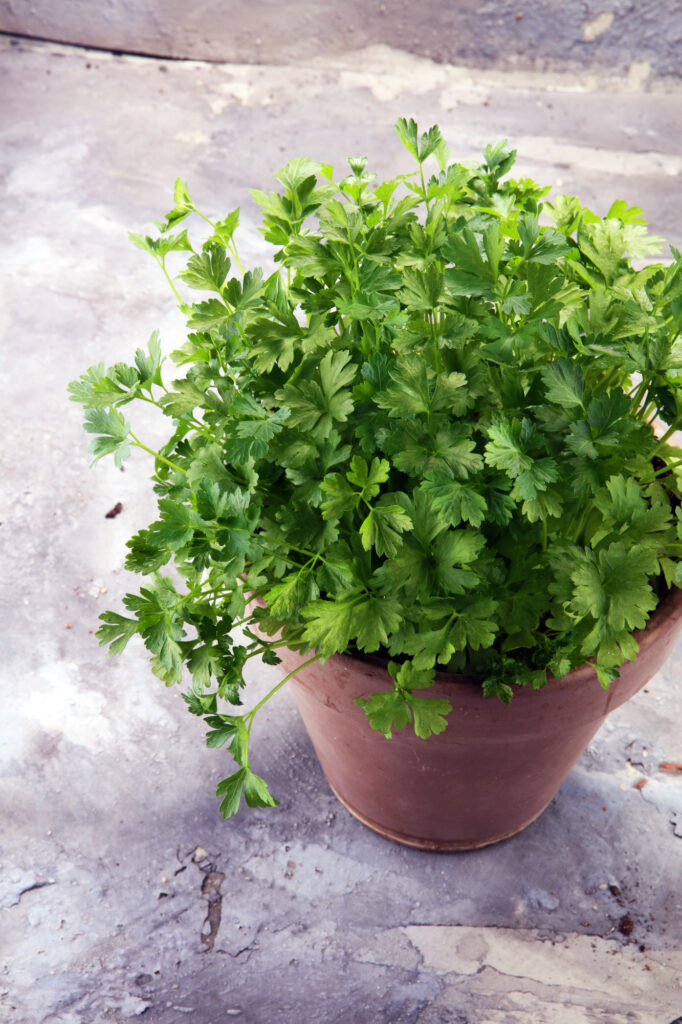
7. Rosemary
No herb garden is complete without fragrant rosemary! Rosemary is so low-maintenance and beautiful that many people grow it as ground cover in their gardens.
Since rosemary grows very slowly and can take months to mature, I recommend purchasing a large rosemary plant from your local garden center or grocery store instead of planting rosemary from seed.
Avoid mildew by not over-watering or overcrowding plants; good air circulation does wonders.
Make sure this easy-to-grow herb gets plenty of sunshine, especially if growing indoors.
SUNLIGHT NEEDS: Full sun
WATER NEEDS: Drought-tolerant. Let the soil dry out between waterings. When you water, water deeply.
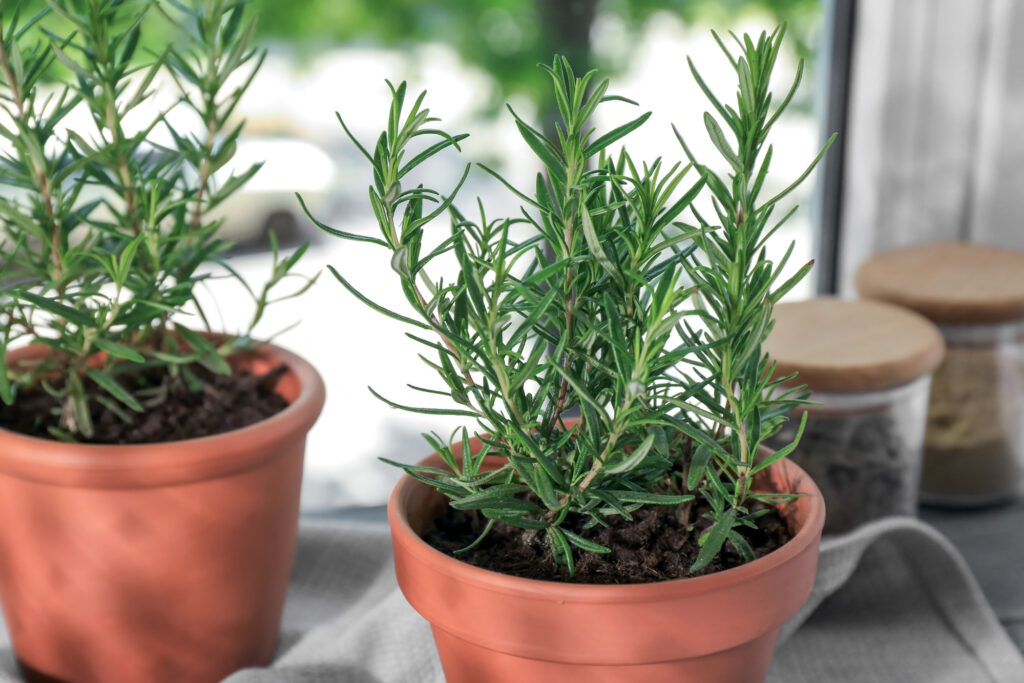
8. Sage
This versatile and easy-to-grow herb needs full sun but hates extreme temperatures so keep an eye on it during heat waves.
Make sure your drain the water and do not water frequently, as mildew can wreak havoc on this drought-resistant plant.
Its drought-tolerance is what makes this herb so low-maintenance.
SUNLIGHT NEEDS: Full sun
WATER NEEDS: Drought-tolerant. Let the soil dry out between waterings and don’t over-water.
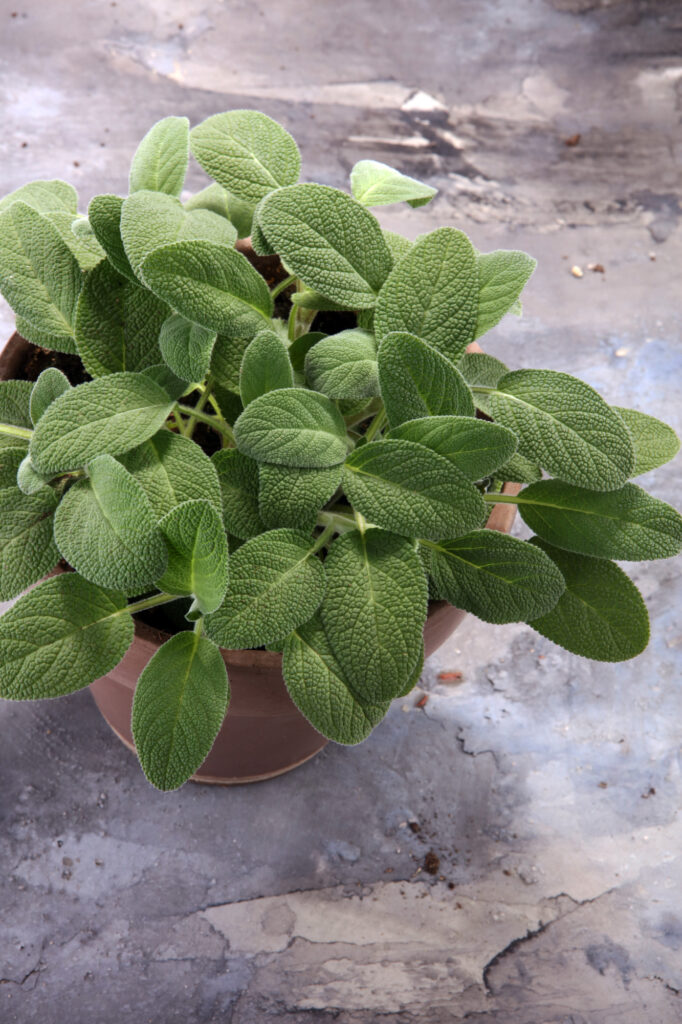
9. Tarragon
Tarragon, another easy-to-grow herb, can be grown from seedlings. Try growing tarragon from seedlings.
It’s a pretty hardy herb and doesn’t need to be watered that often, though it does need plenty of sun.
If you’re looking for drought-tolerant herbs because you forget to water your plant often, then tarragon is a great choice for your herb garden, especially if you enjoy its flavor.
SUNLIGHT NEEDS: Full sun
WATER NEEDS: Drought-tolerant. Let the soil dry out between waterings.

10. Thyme
For thyme to be a truly easy-to-grow herb, buy the plant instead of seeds.
This herb needs full sun and prefers dry soil to damp soil, which can kill the plant by introducing mildew.
Thyme is an easy herb to grow because it’s very low-maintenance and will do perfectly fine on its own. You don’t need to fuss over this herb!
SUNLIGHT NEEDS: Full sun
WATER NEEDS: Drought-tolerant. Let the soil dry out between waterings.
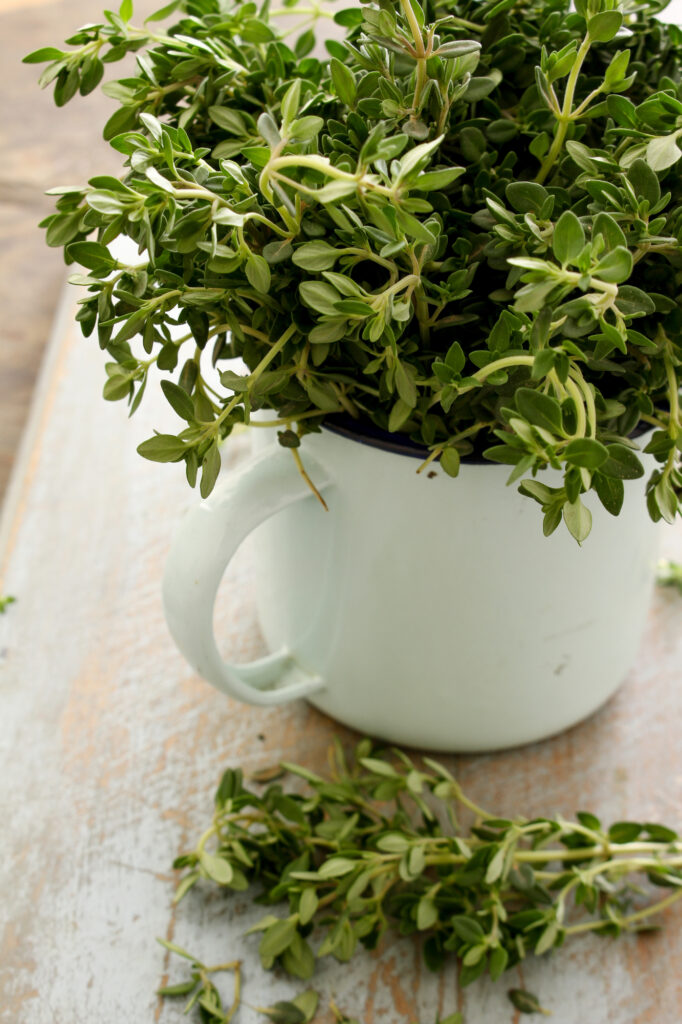
Now that you’ve read through this list of delicious and easy-to-grow herbs, you might want to check out this list of 16 vegetables that can be grown in containers!
Growing vegetables in contaienrs makes growing a vegetable garden possible when you don’t have a large yard. All you need is a few containers!
Good luck with your herb garden!
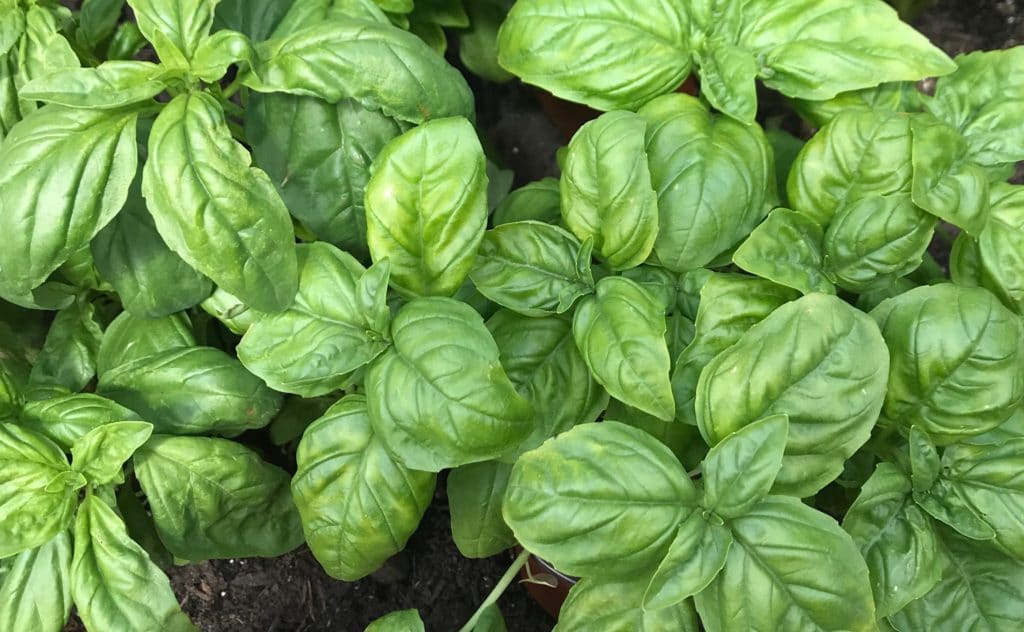
This is a great list! Do they need much water?
Hi Suzanne!
Some herbs need more water than others. Herbs such as Basil and Chives love moist soil so you should water moderately on a daily basis, or every other day, especially if the pot gets several hours of sun exposure. Herbs like Rosemary, Sage, Thyme, and Oregano are more drought-tolerant, so you can wait for the soil to dry out between waterings. Simply stick your finger into the soil to check how dry it is; if you don’t feel any moisture about 2 inches deep then it’s time to water. Make sure to generously water the soil, not the plants or leaves.
Thanks for sharing! Can they be planted together or do they need separate pots?
Hi Vanessa!
Some herbs can be planted together, just make sure that the herbs share the same needs in terms of watering, soil, and sun exposure. Cilantro, Basil, and Parsley can be grown together (they need moist soil). Sage, Thyme, Rosemary, and Oregano can grow together (they love sun). Mint should be grown separately, however, because its roots are far-reaching and it can take over an area pretty quickly. Hope this helps!